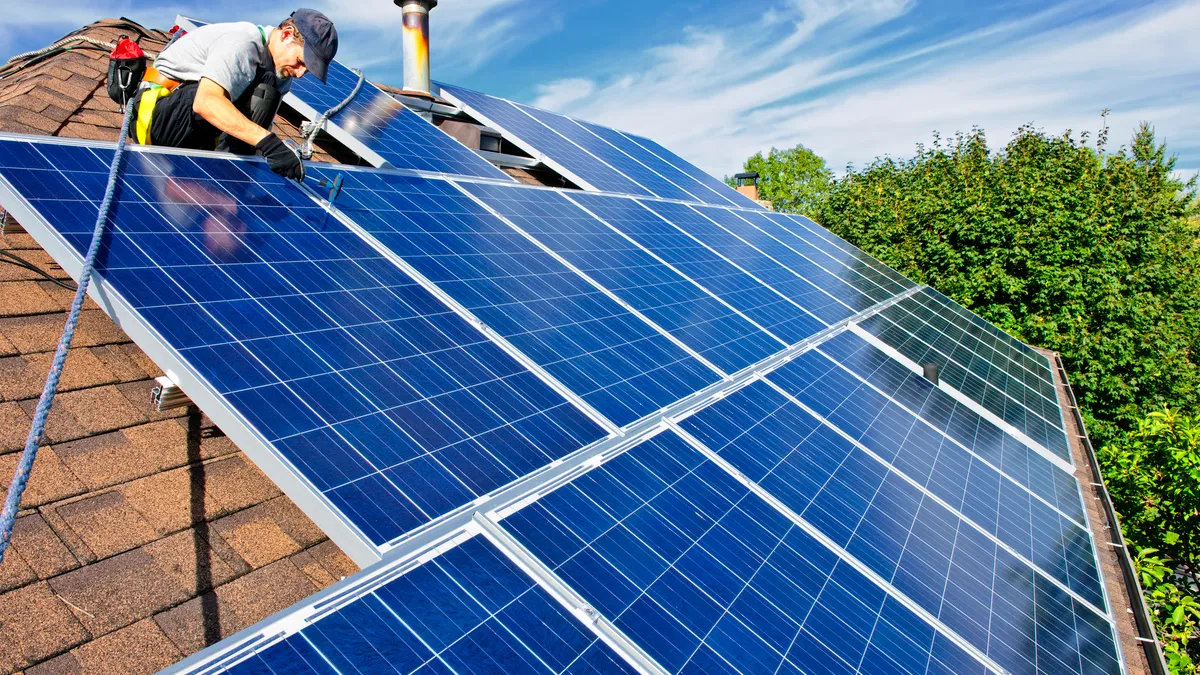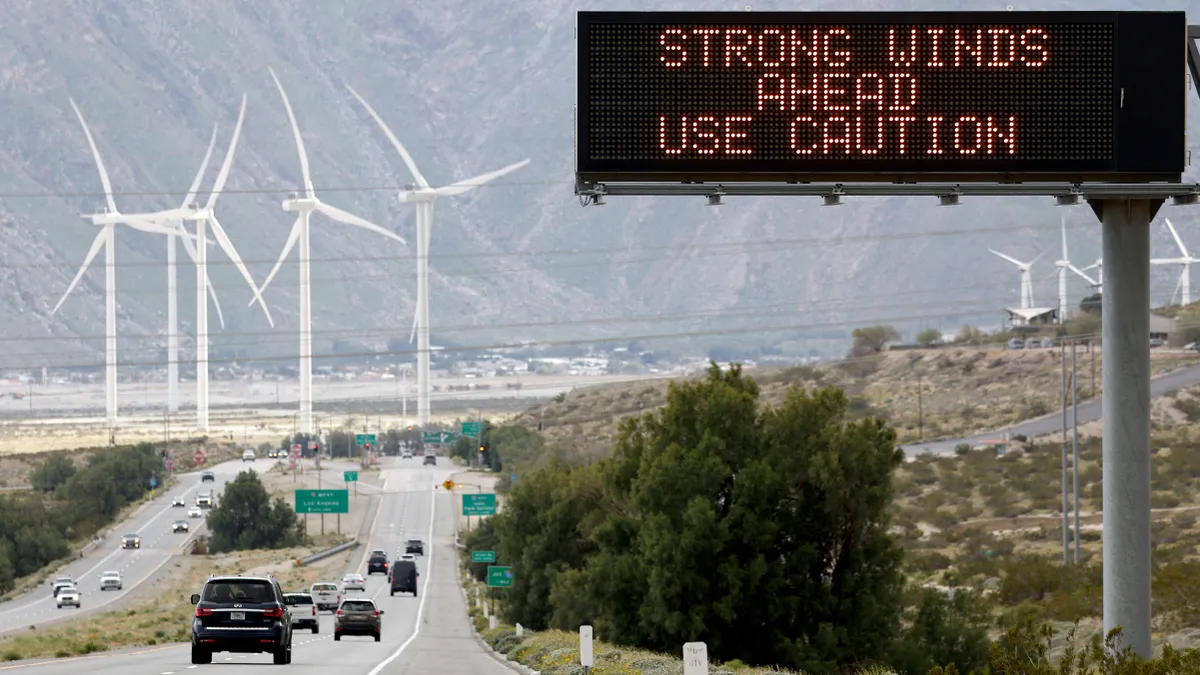The following is a contributed article by Ben Hertz-Shargel, global head of grid edge at Wood Mackenzie.
The share of grid resources that will be centralized versus distributed represents a key uncertainty of the energy transition. The cost of utility-scale solar per Wattdc will be 33% the cost of rooftop solar in 2026, making a deceptively clear case for centralization. Transmission capacity and site restrictions, however, will continue to limit the deployment of centralized resources. The power centralized resources deliver will in turn be limited by transmission and distribution congestion, as well as losses incurred along the way, which amount to roughly 5% of generation.
Distributed energy resources (DERs), on the other hand, exist proximal to loads, requiring investment at the edge of the distribution system but otherwise avoiding power congestion and losses. They can also double as resilience solutions, offering backup power if the grid goes down and contributing to microgrids across large facilities or communities. DERs include demand-side resources, which constitute half of the energy equation and will become critical in ensuring that supply and demand remain in balance. Perhaps most importantly, DERs offer the opportunity to democratize the grid, inviting massive residential and commercial capital into grid modernization to supplement that of large utilities and power producers.
In its second annual U.S. DER Outlook, Wood Mackenzie's Grid Edge Research team analyzed DER development and operation over the decade-long window from 2017 to 2026. Among the high-level takeaways of the study, 78 GW of DER capacity was installed from 2017 through 2021, which is less than half of the 175 GW that will be installed from 2022 through 2026. 175 GW is close to the installed capacity of PJM, by far the largest North American power market — a mind-blowing number. Solar's share of the distributed energy market will drop from 84% in 2020 to 49% in 2026, mostly at the expense of charging infrastructure for electrical vehicles (EVs), whose market share will grow to 21% that year.
The demand-side component of DER capacity in the forecast is flexible demand potential: the flexible capacity (in kW) that residential and commercial resources could provide were they to be offered into power markets. Installed flexible demand capacity today is an order of magnitude greater than wholesale demand response capacity, indicating a significant opportunity to bring customer loads under management and monetize them.
Opportunities
The largest growth drivers of the DER market lie in the hands of government. The extension to the solar investment tax credit (ITC), new standalone storage ITC, and direct payment provisions in the imperiled Build Back Better Act are essential both to prevent a solar demand cliff from developing in 2024 and to reduce the tax equity bottleneck for smaller solar and storage projects. State and local actions to make good on climate targets will also be key. This includes new and expanded solar and storage incentives, such as the Self-Generation Incentive Program in California and the Solar Massachusetts Renewable Target in Massachusetts, as well as progressive building and appliance codes. While some jurisdictions have adopted gas hookup bans, a vast majority have the opportunity to follow the codes adopted in California and New York City, which use heat pumps as a benchmark for energy efficiency.
On the demand side of the DER market, there are three main growth drivers, beginning with corporate sustainability. There are more than 340 members of the RE100 to date — large companies committed to 100% renewable energy consumption — as well as smaller firms that are together driving development of commercial-scale projects. Climate and ESG capital has made clear its intention to fund both sustainability projects and the solution providers behind them. The second driver is extreme weather, which will continue to drive commercial and residential demand for on-site resilience solutions. While that demand is fueling backup generator sales today, there is more battery storage capacity in the microgrid pipeline through 2023 than combined heat and power or natural gas generator capacity, signaling a shift to cleaner resources. The Ford F-150 Lightning has meanwhile introduced vehicle-to-home backup solutions into the public consciousness, which may ultimately provide a resilience lift for residential Level 2 EV chargers.
The final driver of DER demand is less certain than the prior two. While expectations of a mild winter in the U.S. have returned natural gas prices to below $4/mmbtu, the U.S. may not remain decoupled from the natural gas crisis in Europe indefinitely. The consumer price index of utility natural gas rose 3.8 times faster than that for electricity from December 2020 to December 2021. Elevated natural gas prices in future winters would hit home heating bills, reducing the cost of fuel-switching to heat pumps and increasing reliance on the energy efficiency capabilities of smart thermostats.
Risks
Prolonged energy scarcity could cut both ways, however. Risks to DER growth include interest rate hikes, already signaled by the Federal Reserve, which would increase the cost of investing in energy technology. Another risk is the availability of DER supply, limited by raw material and downstream supply chains as well as manufacturing processes unable to keep up with customer demand. These challenges plagued the solar, storage and EV markets in 2021 and will likely persist.
Other risks emerge from the electricity sector. As the penetration of distributed generation (DG) and electrification grow, imbalances between the two — which may vary from feeder to feeder — will begin to saturate utility hosting capacity, exacerbating interconnection as a bottleneck. On the financial side, a phase-out of net metering has begun across the country, with value-of-solar proceedings determining how DG should be compensated — and charged. If the recent proposed decision in California, which calls for an $8/kW monthly Grid Participation Charge, is an indication of what is to come, then the economics of solar may get much tighter over the coming years. That risk would be partially offset by the improved economics of storage and demand management solutions, which enable solar self-consumption.
From emergency capacity to economic participation
Demand management and battery storage (whether mobile or stationary) not only enable bill management but unlock a host of revenue opportunities for customers. Problematically, however, DERs participate in wholesale and retail markets today almost exclusively as emergency capacity. If this trend continues, it will limit the earnings potential of customers and the reliability of the grid.
Capacity markets represent the greatest and the easiest revenue opportunity for DERs, which are often required by legacy market rules to participate as demand response (DR). Capacity obligations require DER aggregators to bid into day-ahead energy markets, but they typically do so at or near the offer price cap, making resources available to grid operators only during extreme scarcity situations. For instance, 83% of economic DR resources bid at ISO-NE's $1,000/MWh cap in 2020. Meanwhile, there has been virtually no economic DR participation in PJM or NYISO to date.
As the energy transition advances, emergency-only participation for DERs will become increasingly unsustainable. Renewables-saturated grids will require customer flexibility on a daily basis, as numerous forward-looking studies have shown. Transportation and heating electrification will exacerbate this need, as will transmission capacity constraints, which limit the ability of central generation to meet demand growth.
Most fundamentally, however, reliance on emergency resources encourages shortage conditions to develop, reducing reliability. It is therefore critical for the distributed energy sector to transition from emergency to economic participation, in which customer demand and energy assets respond to grid conditions through price signals. These price signals could be mediated by dynamic utility rates (such as highly differentiated time-of-use rates), aggregator programs, or direct wholesale or retail market participation.
FERC 2222
Economic participation in wholesale markets will depend in large part on the outcomes of FERC Order 2222 across the various RTOs. Unfortunately, these outcomes are likely to be uneven across customer segments. Commercial resources will benefit from compensation of energy exports (denied under legacy DR participation models today), state-jurisdictional, rather than FERC-jurisdictional interconnection processes, and submetering that enables asset-level settlement. With these market enhancements, resource operators will be able to value stack across energy, ancillary services, and capacity markets while managing on-bill customer costs.
The residential sector will be less fortunate. Residential resources will likely remain excluded from most energy and ancillary service markets, for which they cannot provide the granular metering and telemetry required. As device-level metering data will unlikely be accepted by RTOs, and submeters too expensive for homeowners, participating DERs will settle at the retail meter, resulting in exposure to performance risk from other home loads not under management. A host of challenges specifically facing residential DR will not be addressed by Order 2222 as well. These range from a lack of short-duration participation options in capacity markets to a lack of baselining methodologies that support frequent DR dispatch.
All these developments are worth tracking over the coming months as RTOs submit tariff filings, as they will have lasting effects on the residential and commercial DER markets.






















